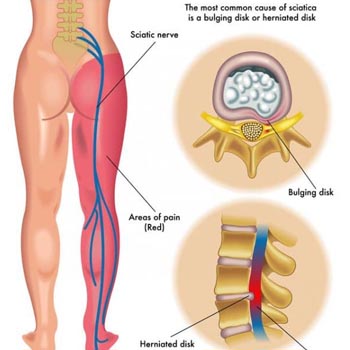- 09:00 AM - 09:00 PM
- Dr.Machani Raghavendra: 994 963 0309

Sciatica pain can greatly impact your daily life, causing discomfort in the lower back, hips, and legs. At SRS Pain Clinic, we specialize in advanced sciatica pain relief through targeted therapies, customized exercise plans, and personalized treatment programs. Our experienced team focuses on addressing the root cause of nerve pain, helping patients improve mobility, reduce discomfort, and restore an active lifestyle.
Sciatica occurs when the sciatic nerve—running from the lower back through the hips, buttocks, and down each leg—is irritated or compressed. This condition can cause sharp pain, numbness, tingling, or weakness along the nerve’s pathway, typically affecting only one side of the body. At SRS Pain Clinic, we utilize precise diagnostic methods to identify the cause and deliver the most effective treatment options for lasting relief.
By combining medical expertise, advanced technology, and a patient-focused approach, SRS Pain Clinic helps individuals manage sciatica pain effectively and prevent future flare-ups. Whether caused by a herniated disc, spinal stenosis, or injury, our goal is to provide comprehensive care that enhances quality of life and supports long-term recovery.
Problem is treated with DRY NEEDLING.
The root cause is treated first. Back function is restored. Muscle strengthening is taught through exercise. Preventive measures are taught and Dos and Don'ts.

Sciatica is a condition caused by irritation or compression of the sciatic nerve, which runs from the lower back down the legs. It often leads to pain, numbness, or tingling in the lower back, buttocks, and legs.
Sharp, burning, or shooting pain in the lower back, buttocks, and legs Pain that worsens with sitting, standing, or sudden movements Numbness, tingling, or weakness in the legs or feet Difficulty walking or standing for long periods
Seek medical attention if: Pain lasts more than a few weeks or worsens over time. You experience severe numbness or weakness in the leg. Loss of bladder or bowel control occurs (a medical emergency). The pain is sudden and intense, especially after an injury.
In rare cases, sciatica may indicate: Cauda equina syndrome (nerve damage causing leg weakness and incontinence) Spinal tumors pressing on the sciatic nerve Severe infections or autoimmune conditions.
Exercise regularly to strengthen core and lower back muscles. Maintain a healthy weight to reduce pressure on the spine. Avoid prolonged sitting—take breaks to stretch and walk. Lift objects properly by bending at the knees, not the waist. Use ergonomic chairs and lumbar support while working.